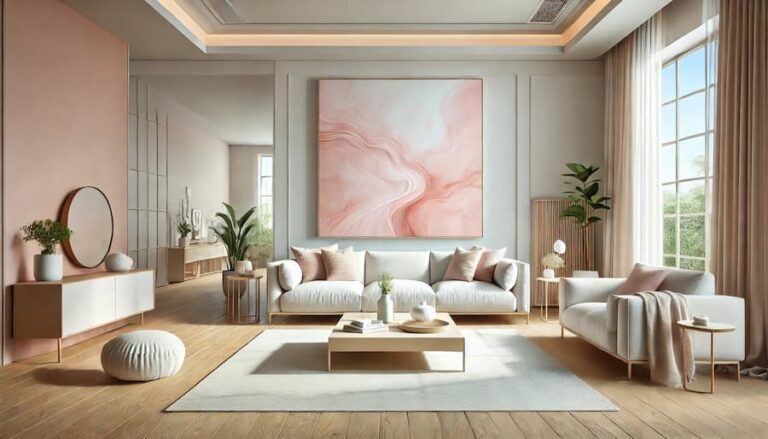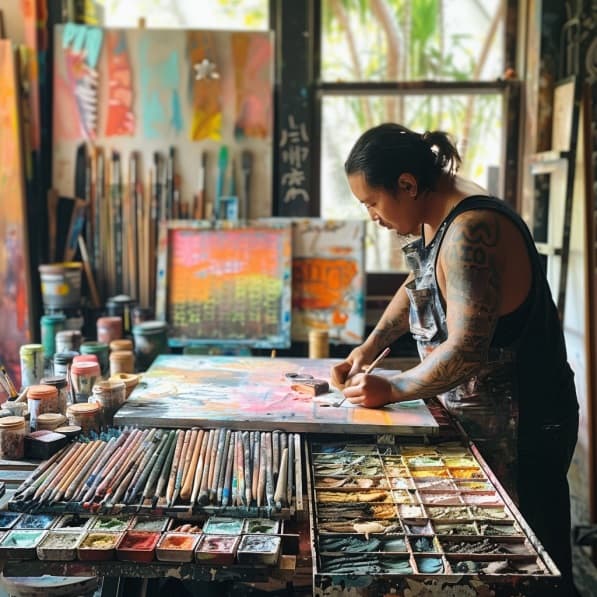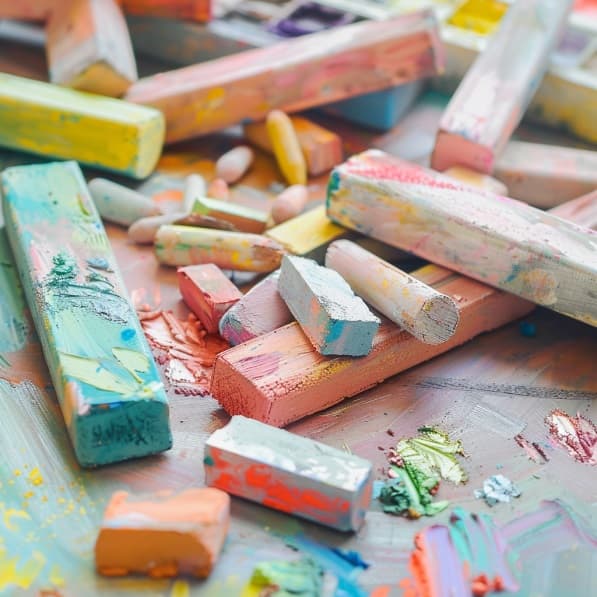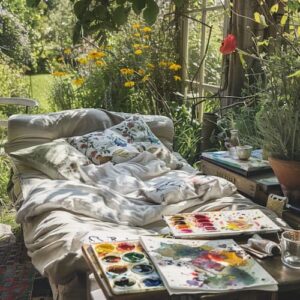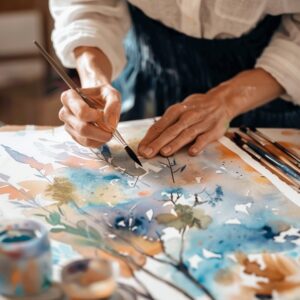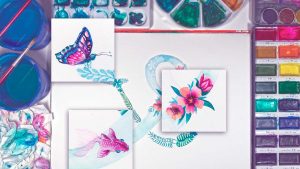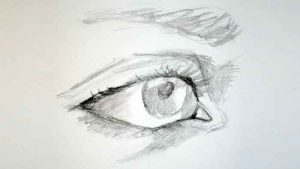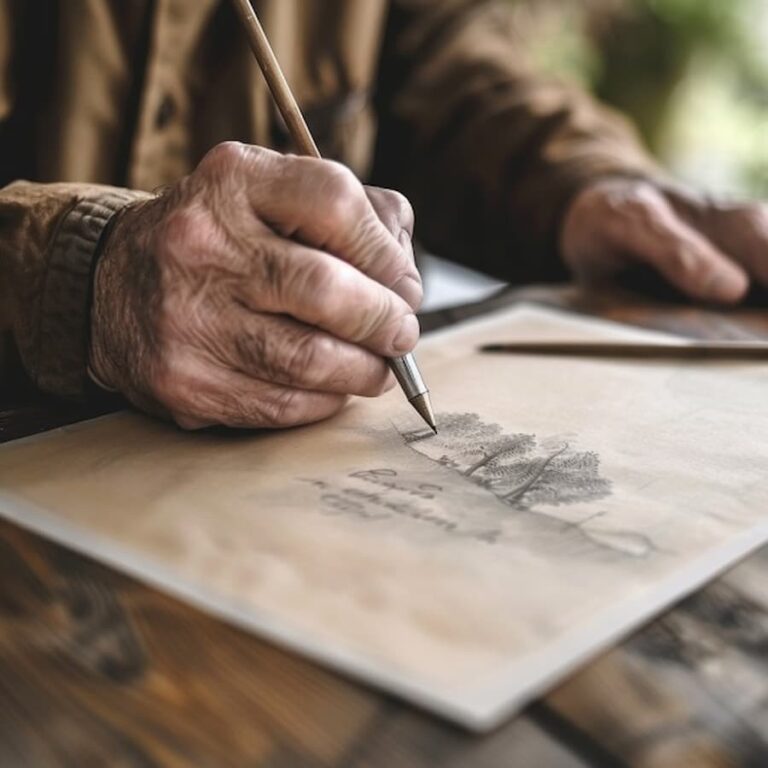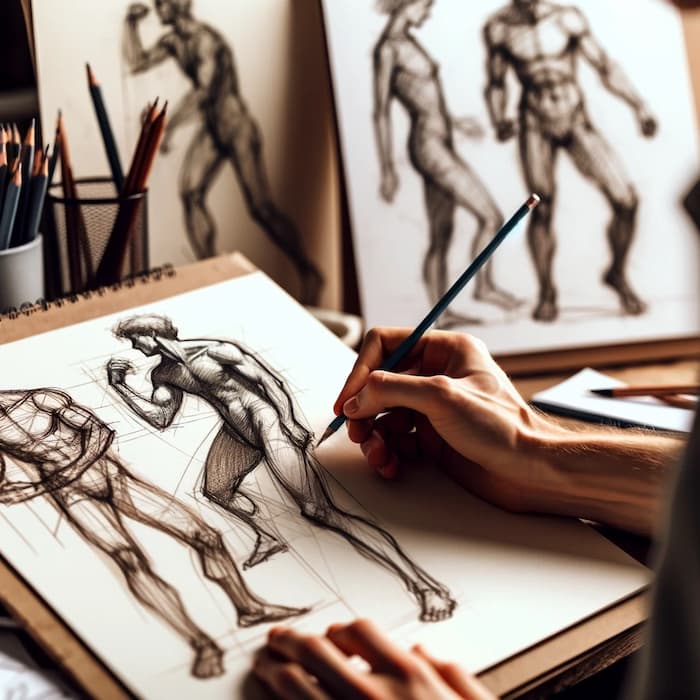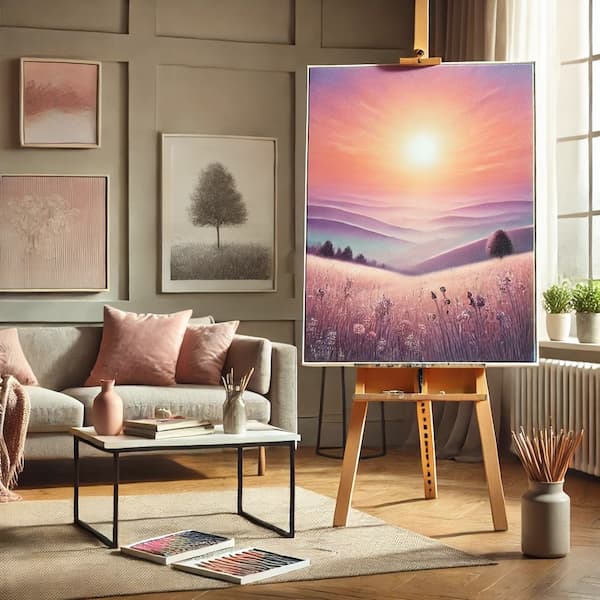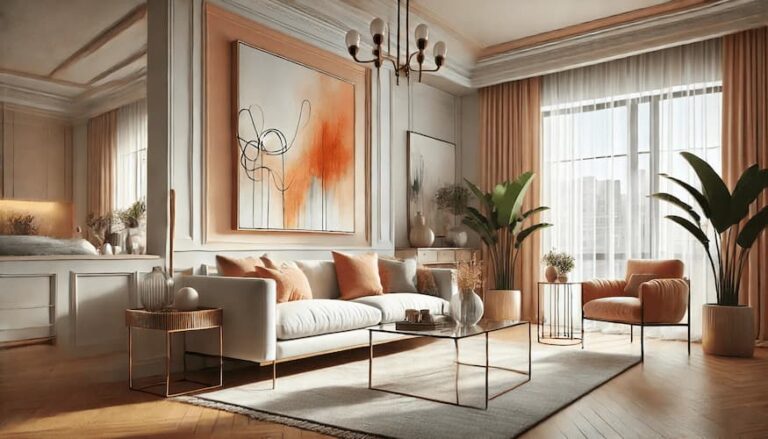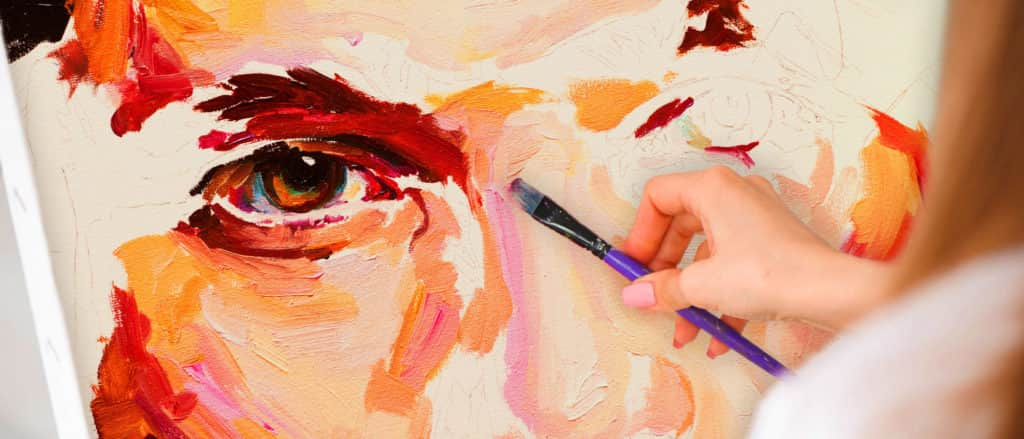Pastel painting is one of the most versatile and expressive artistic techniques.
In this article, we will explore the basics of pastel painting, from the choice of materials to the essential techniques for mastering this art.
Introduction to Pastel Painting
Pastels, known for their vibrant range of colors and textures, offer a unique experience for artists.
Unlike other mediums such as oil or watercolor, pastel combines the qualities of drawing and painting in a compact and accessible form.
But what makes pastel so special?
What are Pasteles?
Pastels are sticks of dry pigment that are mixed with a binder to hold their shape.
There are three main types of pastels:
- Dry Pastels: Include soft and hard pastels.
They are ideal for a wide range of techniques due to their ability to blend and blend easily. - Oil Pastels: Contain oils that give them a creamy texture.
They are perfect for thicker and layered effects. - Pastels in Bars: Combine characteristics of dry pastels and oil pastels, offering a balance between fluidity and texture.
Basic Principles of Pastel Painting
The first step in painting with pastels is to understand how the different types of pastels work and how they can be applied to various surfaces.
Materials Needed and Choice of Cakes
- Soft Pastels: They offer a wide variety of vibrant colors and are easy to blend.
However, their soft texture can be a challenge for beginners. - Hard Pastels: They are ideal for details and fine lines due to their firmer consistency.
- Oil Pastels: Provide a more robust finish and are excellent for layering and texturing.
Papers and Supports
The choice of paper is crucial to the success of a pastel painting.
Textured papers allow for better pigment adhesion.
Some of the most recommended include:
- Canson Mi-Teintes paper: Popular for its texture and variety of colors.
- Sand Paper: Offers a rougher texture, ideal for retaining several layers of cake.
- Pastelmat paper: Combines smoothness and texture, providing a unique surface to work on.
Other Materials
- Fixative: Used to fix the pastel and prevent stains.
- Diffusers or Tortillones: Tools for blurring and mixing colors.
- Gloves and Mask: To protect from cake dust.
Pastel Painting Techniques
Once you have your materials, it’s time to explore basic pastel painting techniques.
- Blurring Technique: Blurring is essential for creating smooth transitions and gradient effects.
You can blend with your fingers, a soft cloth, or a blender.
The key is to apply the pastel in light layers and blend to the desired softness. - Layering: The layering technique allows for depth and texture.
Start with lighter colors and work toward darker colors, applying each layer gently to avoid saturating the paper. - Texture Effects: To create texture, you can use techniques such as scratching or rubbing.
Scratching involves scraping off the top layer of pastel to reveal the color underneath.
Rubbing uses tools such as stiff brushes or spatulas to create patterns on the surface. - Color Blending: Color blending in pastels can be achieved in several ways.
One of the most common is to overlap layers of different colors and blend them.
You can also mix directly on the palette before applying to the paper.
Care and Conservation
Caring for your paints and materials is crucial to maintain their quality over time.
- Fixing the Work: Applying a fixative at the end of your work helps protect the pastel from smudging and wear.
Use spray fixatives in a well-ventilated area and with light coats to prevent colors from bleeding. - Storage: Store your paints in protective folders or frames with glass to avoid direct contact with the surface.
Upright storage is ideal to prevent pastel dust from accumulating. - Material Maintenance: Keep your cakes organized and clean.
You can use a box with compartments and a soft cloth to wipe off dust residue.
Tips and Tricks for Beginners
-Practice Light Hand
Light pressure when applying the pastel allows for smoother layers and better blending possibilities.
Avoid pressing too hard, as this can saturate the paper and make correction difficult.
-Experiment with Textures
Don’t limit yourself to using only your fingers to blend.
Try different tools such as brushes, sponges, and blenders to see how they affect the texture and appearance of the cake.
-Use Color Strategically
Choose complementary colors to create contrast and analogous colors for smooth transitions.
Experiment with color combinations to discover new palettes.
-Learn from the Masters
Look at works by well-known artists who use pastel for inspiration and to learn new techniques.
Looking at how they handle light, color, and texture can offer valuable insights.
-Keep your work area clean.
Cake dust can be harmful if inhaled in large quantities.
Be sure to work in a well-ventilated area and regularly clean your workspace.
Pastel painting offers an exciting opportunity to explore color and texture in a direct and tactile way.
With these basic principles, you’ll be well on your way to mastering this technique and creating vibrant, dynamic works of art.
To learn how to work with pastels like a real professional, knowing all its characteristics, use of materials and how to get the most out of this technique, visit our Painting Course with Lifetime Access + Workshops.
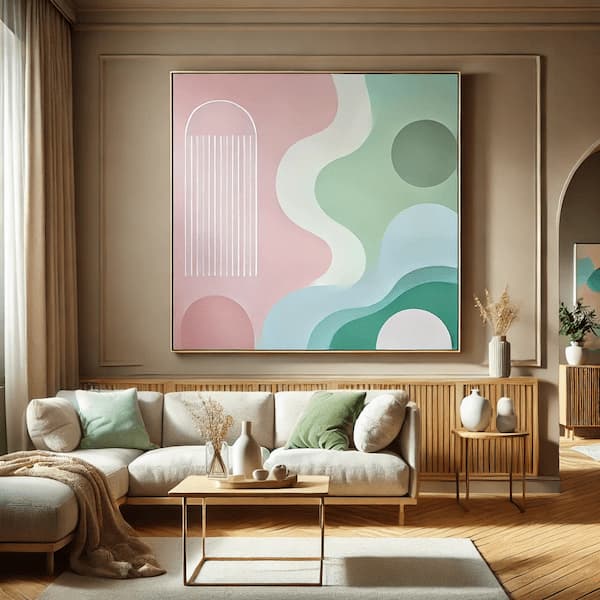
Características de los cuadros color pastel
La sutileza en los colores
Lo que distingue a los cuadros color pastel es la suavidad y la ligereza de los colores utilizados. En estos cuadros, los tonos más saturados ceden el protagonismo a colores tenues y apagados, creando un ambiente de serenidad. Los cuadros en tonos pastel pueden incluir una amplia paleta de colores como el lavanda, el celeste, el rosa suave y el melocotón, que en conjunto generan una atmósfera calmada y apacible.
La importancia de las transiciones tonales
El manejo de las transiciones entre los tonos es crucial en los cuadros tono pastel. Los artistas suelen utilizar técnicas de difuminado para que los colores se mezclen de forma suave, lo que da como resultado imágenes etéreas y envolventes. En estos cuadros, los bordes duros o contrastes marcados son sustituidos por gradaciones delicadas que invitan al espectador a perderse en la obra.
Textura y profundidad en los cuadros color pastel
Otro elemento distintivo de los cuadros color pastel es la textura. Dado que los pasteles no requieren de disolventes ni aceites, la aplicación directa del pigmento en el lienzo o papel crea una sensación táctil única. La textura aterciopelada del pastel añade una dimensión adicional, permitiendo al artista jugar con las capas y crear una profundidad que da vida a la obra.
Los cuadros color pastel en la decoración de interiores
Creando ambientes con cuadros tonos pastel
Los cuadros tonos pastel son una excelente opción para quienes desean añadir un toque de serenidad y elegancia a sus espacios. Debido a la naturaleza suave de estos colores, los cuadros color pastel se integran fácilmente en cualquier estilo decorativo, desde el minimalismo moderno hasta el estilo vintage o rústico. El equilibrio que proporcionan estos tonos los convierte en una herramienta clave para quienes buscan un hogar acogedor y armonioso.
Cómo combinar cuadros tono pastel con el mobiliario
Una de las grandes ventajas de los cuadros color pastel es su capacidad para complementar casi cualquier esquema de color. Si tienes muebles en tonos neutros como beige, gris o blanco, un cuadro en tonos pastel puede añadir un toque de color sin romper la armonía del espacio. Por otro lado, si tu decoración incluye colores más vivos, los cuadros de colores pastel pueden actuar como un contrapunto sutil que equilibra el ambiente.
Tendencias en cuadros color pastel en la actualidad
Hoy en día, los cuadros color pastel siguen siendo populares, especialmente en la decoración de interiores. Con el auge de las tendencias que favorecen los espacios luminosos, amplios y minimalistas, los cuadros en tonos pastel han encontrado un lugar destacado en hogares modernos. Estos cuadros son perfectos para aquellos que buscan un arte que sea estéticamente agradable y que al mismo tiempo inspire tranquilidad y bienestar.
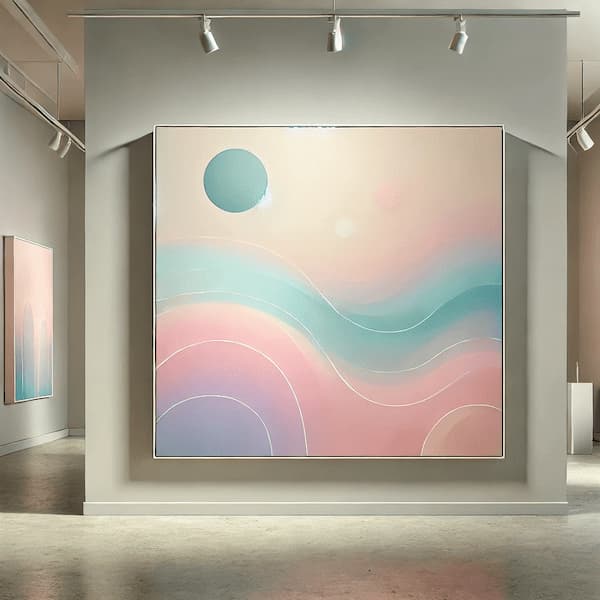
Cómo elegir el cuadro color pastel perfecto
Considera el tamaño y la ubicación
Al seleccionar un cuadro color pastel, es importante tener en cuenta el tamaño de la obra y el lugar donde se va a colocar. Un cuadro tono pastel de gran tamaño puede ser el punto focal de una sala de estar, mientras que uno más pequeño puede servir como complemento decorativo en un rincón o en un espacio más íntimo.
Temática y estilo de los cuadros
Los cuadros color pastel pueden abarcar una variedad de temáticas, desde paisajes serenos hasta retratos abstractos o figuras geométricas. Elegir una temática que se alinee con la estética de tu hogar o con tu estilo personal te ayudará a crear un espacio cohesivo y armonioso.
El impacto emocional de los cuadros color pastel
La serenidad como motor emocional
Uno de los mayores atractivos de los cuadros color pastel es su capacidad para transmitir emociones de calma y paz. Los tonos suaves y la delicadeza en las transiciones entre los colores generan una sensación de tranquilidad que invita a la introspección. Ya sea un paisaje suave o una composición abstracta, los cuadros en tonos pastel evocan una respuesta emocional serena, ideal para quienes buscan un ambiente relajante.
Conexión con la naturaleza y la ligereza
Muchos cuadros de colores pastel incluyen elementos naturales como paisajes, flores o cielos despejados, que evocan la belleza del entorno natural. Estos cuadros no solo reflejan la calma de la naturaleza, sino que también pueden ayudar a crear un espacio donde la mente pueda descansar y desconectarse del estrés cotidiano.
Para aprender a trabajar con pastel como un auténtico profesional, conociendo todas sus características, uso de materiales y cómo sacarle el máximo partido a esta técnica, visita nuestro Curso de Pintura con Acceso Vitalicio + Talleres.

